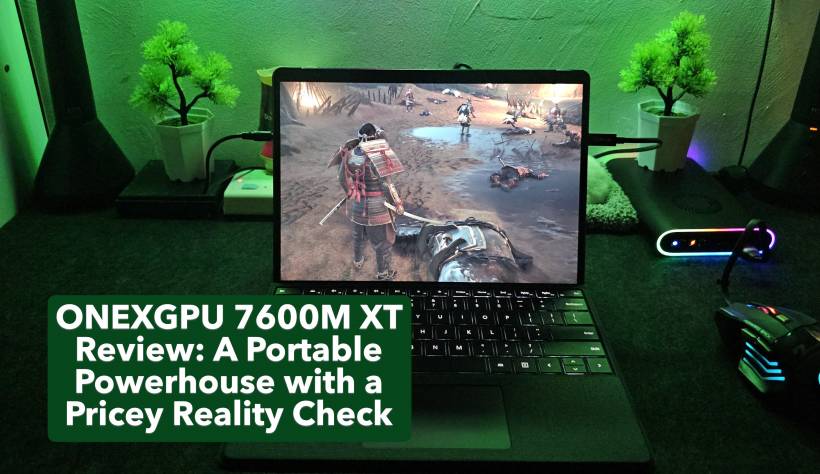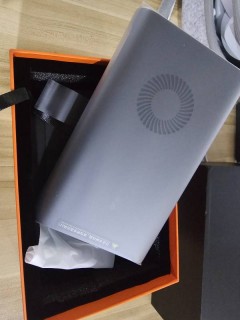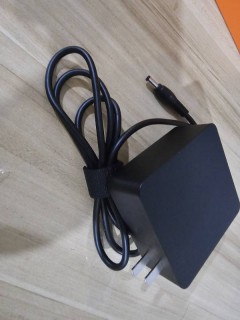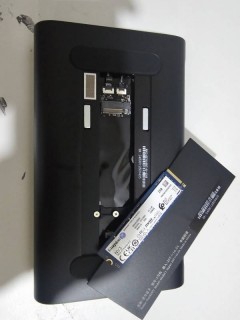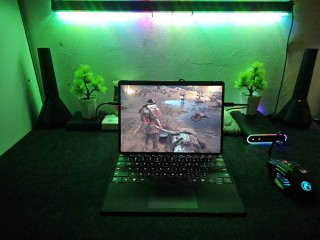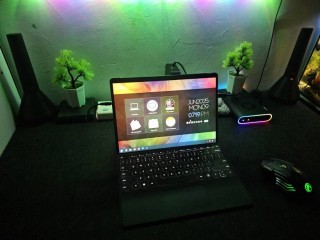In April 2025, I decided to give my Surface Pro 8 a serious GPU boost by picking up the ONEXGPU 7600M XT, a compact external GPU solution that promised desktop-class gaming power in a sleek, minimalist enclosure. With USB4 becoming more common in ultraportables, I figured—why not?
At MYR 3,199.00 on Shopee, it wasn't cheap, but it came bundled with a 2TB Gen4 NVMe SSD, which made the deal a little sweeter. After spending weeks gaming and testing it in real-world scenarios, I'm sharing my honest experience—performance, practicality, and whether this is something you should consider for your own setup.
First Impressions: Premium Packaging, Minimal Fuss
The ONEXGPU came in a high-quality box with orange-black branding that screams "premium tech." Inside, I found:
The build quality is excellent—aluminum body, no flex, decent weight but not too heavy. There's RGB lighting subtly placed in the front (no wild gaming aesthetics here). It fits perfectly on a minimalist desk, especially if you're already rocking a Surface setup like mine.
Internal Specs & Performance: What's Under the Hood?
The AMD Radeon RX 7600M XT is no slouch. Built on RDNA 3, it packs serious horsepower for a mobile GPU and can genuinely rival older desktop GPUs like the RX 6700 or RTX 3060 Ti.
GPU Specs:
| Specification | Details |
| Architecture | AMD RDNA 3 |
| Compute Units | 32 |
| Stream Processors | 2048 |
| Memory | 8GB GDDR6 |
| Memory Bus Width | 128-bit |
| TGP (Total Graphics Power) | ~120W |
| PCIe Interface | PCIe Gen4 x8 (via USB4 internally) |
And let's not forget the bundled 2TB Gen4 NVMe SSD, which was a fantastic addition. It provides fast boot times and load speeds—ideal for storing large games like Cyberpunk 2077 or Elden Ring.
While most eGPUs suffer a noticeable performance penalty due to Thunderbolt or USB4 bottlenecks, the ONEXGPU's internal architecture and optimization with USB4 helped mitigate this. I was genuinely surprised how well it held up.
Real-World Usage with Surface Pro 8
Let's get something straight—the Surface Pro 8, while powerful for a tablet hybrid, was never meant to handle AAA gaming. But paired with the ONEXGPU?
Night. And. Day.
What I Played:
Thermals were under control, and fan noise was acceptable—even during long gaming sessions. The Surface Pro 8 offloaded GPU tasks effectively, and the USB4 connection ensured data transfer wasn't bottlenecked, though you can expect a 10-20% performance drop vs a desktop card due to the nature of eGPUs.
Use Case Reflection: Is It Worth It?
Now here's where things get complicated.
Yes, it performed wonderfully. Yes, I loved how portable and clean the setup looked on my desk. But after the honeymoon period, I started thinking: Was it really worth MYR 3,199?
For Me: Not Quite
I already have a powerful desktop gaming rig at home with an RTX 3070, plenty of RAM, and better thermal management. Setting up Moonlight + Sunshine for remote game streaming gives me nearly the same experience on the Surface Pro—without spending a single ringgit extra.
The ONEXGPU made sense when I wanted plug-and-play local gaming. But for someone who doesn't travel often or need to game on the go without relying on Wi-Fi, the cost-to-benefit ratio just doesn't make enough sense.
Who Should Buy the ONEXGPU 7600M XT?
This product isn't for everyone. It's not even for most people. But in the right scenario, it can be a game-changer.
Ideal for:
Not ideal for:
PROS
CONS
Final Verdict: An Excellent Niche Product
The ONEXGPU 7600M XT delivers on what it promises—desktop-class gaming in a compact, portable form, specifically for devices like the Surface Pro 8. Paired with USB4, performance is smooth and consistent. The bundled 2TB NVMe adds good value, and build quality is fantastic.
But the MYR 3,199 price tag? That stings. If you're not fully committed to using your ultrabook as your primary gaming device, or don't travel frequently, this may not be the investment for you.
I'm personally satisfied, but in hindsight, I could've stuck to game streaming from my desktop and saved a lot of money.
Have questions about the ONEXGPU? Want to see benchmarks or a setup guide? Let me know, I might post a follow-up!
